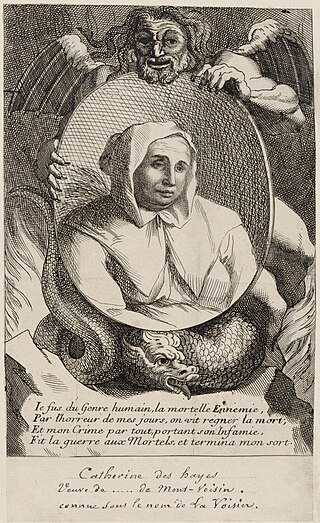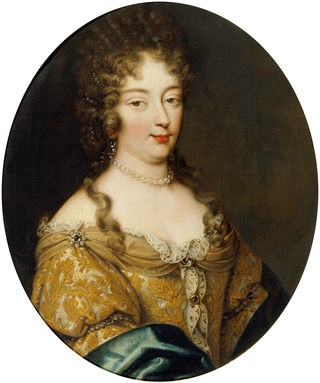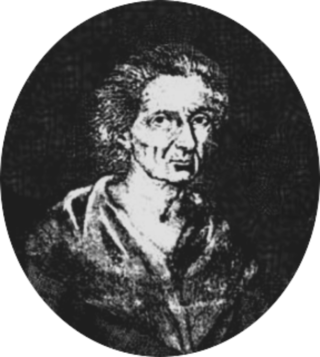
1659 (MDCLIX) was a common year starting on Wednesday of the Gregorian calendar and a common year starting on Saturday of the Julian calendar, the 1659th year of the Common Era (CE) and Anno Domini (AD) designations, the 659th year of the 2nd millennium, the 59th year of the 17th century, and the 10th and last year of the 1650s decade. As of the start of 1659, the Gregorian calendar was 10 days ahead of the Julian calendar, which remained in localized use until 1923.

A potion is a liquid "that contains medicine, poison, or something that is supposed to have magic powers." It derives from the Latin word potio which refers to a drink or the act of drinking. The term philtre is also used, often specifically for a love potion, a potion that is supposed to create feelings of love or attraction in the one who drinks it. Throughout history there have been several types of potions for a range of purposes. Reasons for taking potions ranged from curing an illness, to securing immortality to trying to induce love. These potions, while often ineffective or poisonous, occasionally had some degree of medicinal success depending on what they sought to fix and the type and amount of ingredients used. Some popular ingredients used in potions across history include Spanish fly, nightshade plants, cannabis, and opium.

Catherine Monvoisin, or Montvoisin, née Deshayes, known as "La Voisin", was a French fortune teller, commissioned poisoner, and professional provider of alleged sorcery. She was the head of a network of fortune tellers in Paris providing poison, aphrodisiacs, abortion, purported magical services and the arranging of black masses, with clients among the aristocracy and became the central figure in the famous affaire des poisons. Her purported organization of commissioned black magic and poison murder was suspected to have killed 1,000 people, but it is believed that upwards of 2,500 people might have been murdered.

Aqua Tofana was a strong poison created in Sicily around 1630 that was reputedly widely used in Palermo, Naples, Perugia, and Rome, Italy. It has been associated with Giulia Tofana, or Tofania, a woman from Palermo, purportedly the leader of a ring of six poisoners in Rome, who sold Aqua Tofana to would-be widows.

Giulia Farnese was an Italian noblewoman, a mistress to Pope Alexander VI, and the sister of Pope Paul III. Known as Giulia la bella, she was a member of the noble Farnese family, who were prominent leaders in the Italian regions of Parma and Piacenza. After marrying into the noble Orsini family in the Papal States, Farnese soon acquainted herself with, and initiated an affair with, the Spanish Cardinal Rodrigo de Borja. When the cardinal was elected Pope, Farnese continued the increasingly advantageous liaison, which enabled her to have her brother Alessandro made a cardinal, until losing Alexander's favor at the turn of the century.

Olympia Mancini, Countess of Soissons was the second-eldest of the five celebrated Mancini sisters, who along with two of their female Martinozzi cousins, were known at the court of King Louis XIV of France as the Mazarinettes because their uncle was Louis XIV's chief minister, Cardinal Mazarin. Olympia was later to become the mother of the famous Austrian general Prince Eugene of Savoy. She also involved herself in various court intrigues including the notorious Affair of the Poisons, which led to her expulsion from France.
Pier Francesco Orsini, also called Vicino Orsini, was an Italian condottiero, patron of the arts, and duke of Bomarzo. He is famous as the commissioner of the Mannerist Park of the Monsters in Bomarzo.
Maria Renata Singer or Saenger von Mossau was a Bavarian nun executed for heresy, witchcraft, apostasy and satanism, one of the last people executed for these charges in Germany and Europe.

Giovanna Bonanno was an alleged Italian witch and professional poisoner known as la vecchia dell'aceto, "The Old Vinegar Lady."

The Mazarinettes were the seven nieces of Cardinal Jules Mazarin, (1639–1661), chief minister to the Kings Louis XIII and Louis XIV of France from 1642 until his death.

Gerolama Orsini (1504–1569) sometimes Girolama Orsini was the Duchess of Parma as the wife of Pier Luigi Farnese, Duke of Parma. She served as Regent (Governor) of the Duchy of Castro in the name of her son Orazio, Duke of Castro between 1550 and 1553.
Gironima Spana was an Italian poisoner and astrologer. She was the central figure in the infamous Spana Prosecution against a net of poison merchant women in Rome who distributed the poison Aqua Tofana to clients who wished to commit murder, in particular women who wished to become widows. She was executed alongside four women accomplices for having distributed poison to clients with the intent of murder. She has also been called Girolama Spara, Girolama Spala, L’ Astrologa, La Profetessa, and L'Indovina, but Gironima Spana was the spelling she herself used in court documents.

The Spana Prosecution was a major criminal case which took place in Rome in the Papal States between January 1659 and March 1660.
Giovanna De Grandis was an Italian poisoner. She was one of the central figures of the infamous Spana Prosecution, one of only six to be executed among over forty people to be implicated.
Thofania d'Adamo or Teofania di Adamo, Epifania d'Adamo or La Tofania was an Italian poisoner.
Maria Spinola was an Italian poisoner. She was one of the central figures of the infamous Spana Prosecution, one of only six to be executed among over forty people to be implicated.
Laura Crispoldi was an Italian poisoner. She was one of the central figures of the infamous Spana Prosecution, one of only six to be executed among over forty people to be implicated.
Graziosa Farina was an Italian poisoner. She was one of the central figures of the infamous Spana Prosecution, one of only six to be executed among over forty people to be implicated.
Cecilia Verzellina was an Italian poisoner. She was one of the central figures of the infamous Spana Prosecution. Of the over forty people implicated in the trial, she was one of six to be executed. While the other five executed women where poison sellers and poison makers, she was the only client to be executed.

Girolama Cartolari was an Italian printer from Perugia active in Rome from 1543 to 1559. She was the wife of printer Baldassarre Cartolari and ran the Cartolari printing workshop in Rome after his death.










